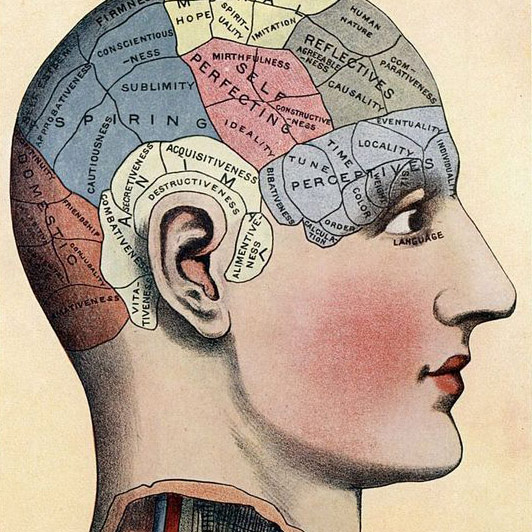
WEDNESDAY, Feb. 12, 2014 (HealthDay News) — Middle-aged adults who are unfortunate enough to have both parents suffer from Alzheimer’s disease may face yet another worry: an increased risk of early, Alzheimer’s-related brain changes.
In a new study, researchers found that of more than 50 healthy adults, those with two parents affected by Alzheimer’s were more likely to show certain abnormalities in brain scans.
The researchers said the full significance of the findings, which were reported online Feb. 12 in the journal Neurology, is unclear because it is not yet known whether these early changes will definitely lead to full-blown Alzheimer’s.
Instead, the study looked for changes in the brain that have been linked to Alzheimer’s. Those included deposits of a protein called beta-amyloid and a thinning of the brain’s gray matter — the tissue that basically acts as the brain’s information-processing center.
“Some of the same brain changes that we see in Alzheimer’s disease can also be seen in healthy younger people,” said lead researcher Lisa Mosconi, a research assistant professor of psychiatry at NYU Langone Medical Center in New York City.
But all of the study participants — most of whom were in their 40s and 50s — had normal mental function.
Dr. Ronald Kanner, a neurologist who was not involved in the study, said it’s still not known whether these brain changes can actually predict whether someone will get Alzheimer’s.
What’s needed now is a long-term follow-up to see whether these indicators of changes in the brain do give early warnings for which people are at risk, said Kanner, chairman of neurology at North Shore University Hospital in Manhasset, N.Y.
Mosconi agreed. “Just because they have these [indicators] doesn’t mean they’ll develop Alzheimer’s,” she said. “We know that many older people with Alzheimer’s brain pathology do not develop dementia.”
Still, Kanner called the findings “quite significant.” And even though the study participants did not have dementia, the results add to evidence of a role for genetics in the common form of Alzheimer’s, he said.
It has long been known that a rare form of the disease that arises before age 65, called early onset familial Alzheimer’s, is caused by genetic mutations passed from parent to child.
But, Kanner said, this latest research suggests there is also a genetic component to the more common “late-onset” Alzheimer’s.
Studies have found that older adults who had a parent with Alzheimer’s have a higher risk of developing it than those with two unaffected parents. And the risk is higher still when both parents had Alzheimer’s.
Fortunately, that situation affects less than 5 percent of adults, Mosconi said.
But, she said, it might be wise to include those individuals in future studies testing ways to prevent Alzheimer’s.
For the current study, Mosconi’s team recruited 52 healthy adults to undergo MRI and PET scans of the brain. They were split evenly into four groups of 13: those with two parents who had Alzheimer’s, those with an affected mother, those with an affected father and those with two Alzheimer’s-free parents.
Overall, the study found, the group with two affected parents showed more Alzheimer’s-linked brain abnormalities. They had, for example, 5 percent to 10 percent more beta-amyloid deposits than the other three groups. They also showed the lowest volume of gray matter and a slower metabolism of glucose, the brain’s main fuel.
In general, Mosconi said, the study saw a “parent-dose” pattern: People with two Alzheimer’s-affected parents had the highest level of disease indicators, followed by people whose mother was affected, and then those with an affected father.
Another expert said the finding of a higher risk in the mother-only group is interesting.
Past research has suggested that people’s risk of Alzheimer’s might be higher when a mother, rather than a father, was affected, said Jeremy Silverman, a professor of psychiatry at the Mount Sinai Icahn School of Medicine in New York City.
If that’s true, it could offer hints about the genetic roots of Alzheimer’s, he said. There is, for example, a type of DNA — called mitochondrial DNA — that’s inherited only from mothers.
For now, there is no real-world use for the findings.
“You definitely aren’t going to run out and have these [indicators] measured,” Kanner said.
Even if the indicators do turn out to predict an increased Alzheimer’s risk, there is currently nothing doctors can do about it.
If researchers can develop drugs that help prevent the disease, Mosconi said, one can imagine a future in which people with a strong family history of Alzheimer’s undergo a brain scan to look for early markers for the disease.
The ideal scenario, she said, would be to give preventive treatments to people at high risk of Alzheimer’s who are not yet showing symptoms.
Silverman said researchers are looking for various ways to intervene early. So far, he said, “intervention efforts with [patients] who are already showing clinical signs of Alzheimer’s have largely not been successful in meaningfully treating the illness.”
For now, Mosconi said, people with a strong family history of Alzheimer’s can focus on the lifestyle measures recommended for everyone — such as a healthy diet and regular exercise.
Studies have linked the same factors that can damage the heart — such as high blood pressure, high cholesterol, obesity and diabetes — to an increased risk of Alzheimer’s.
Those studies, and the latest research, don’t prove cause-and-effect. But, Mosconi said, there are already plenty of other reasons to maintain a healthy lifestyle.
More information
The Alzheimer’s Association has more on Alzheimer’s disease.
Copyright © 2025 HealthDay. All rights reserved.

